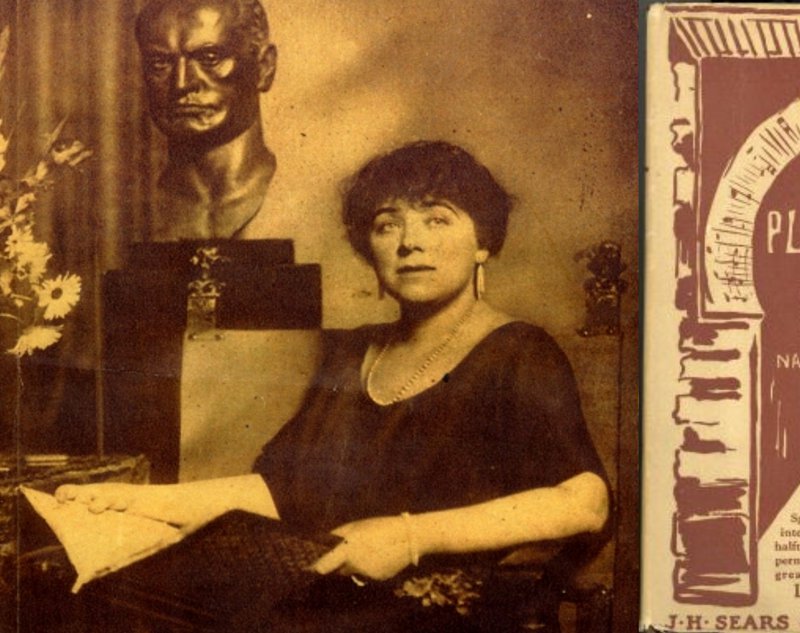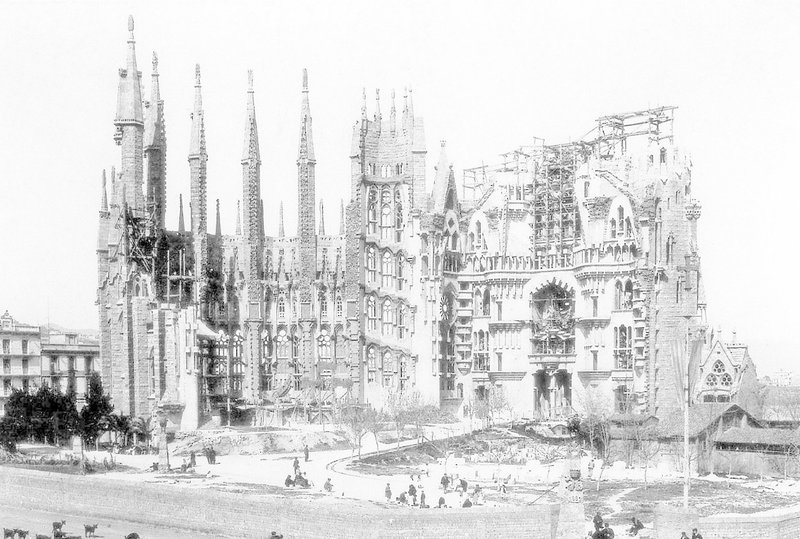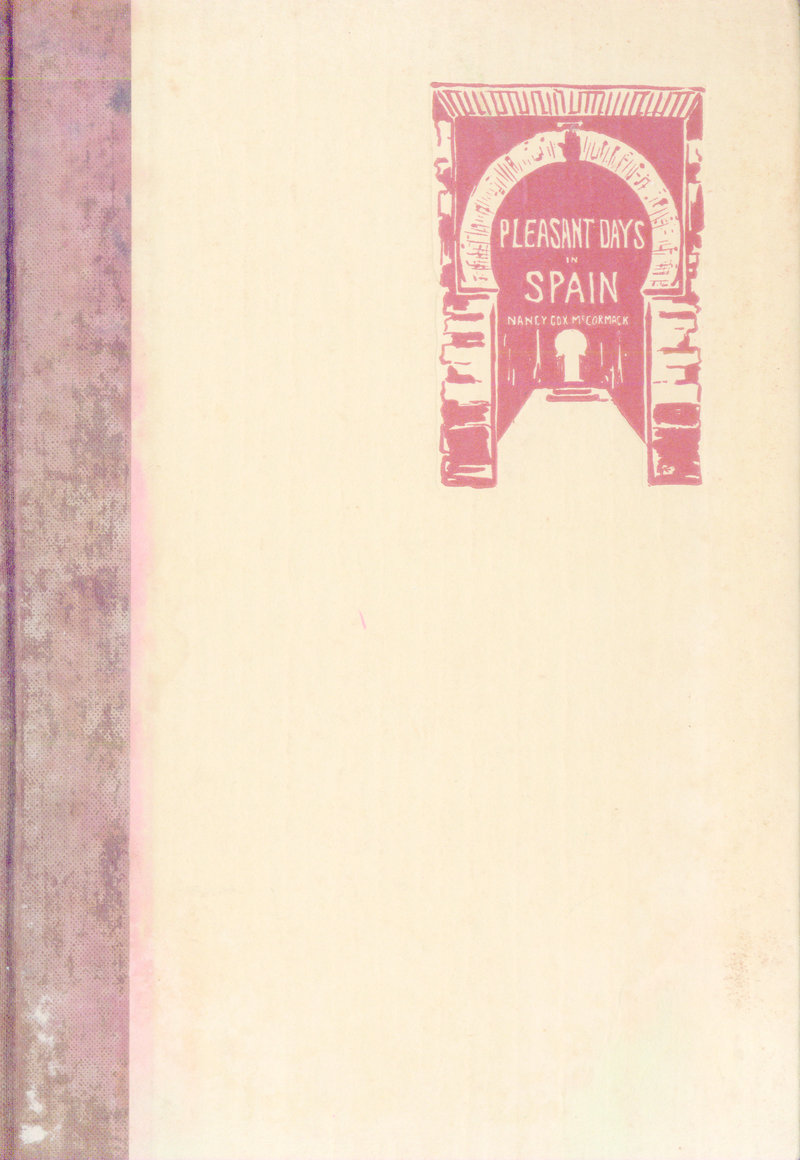A city with charm
A bustling day in the enchanting city of Barcelona delights a well-travelled Amercian sculptor
Women Travellers in Catalan Lands
The charm of Barcelona, lies, I think, in a few early buildings, to wit, the fourteenth century Town Hall, the unique old Parliament House of Catalonia and the beautiful fifteenth century Gothic cathedral where the streets surrounding it have their unmolested being with the shadows and narrownesses of palace walks of the same epoch. There is an old palace (with famous ceiling) built by Charles V, that left Francis the First in awe of Spanish wealth when he was kept prisoner in 1525 -do you know it?
I found the Cathedral particularly impressive inside and out. The fine ancient glass and carvings of the legendary Knight and Dragon, the fountained court where white geese and pigeons still plume themselves, the altars protected with the bent-iron screens of the earlier church, all please one's taste for ecclesiastical architecture and its ornature.
Outside this edifice, walking in the cobbled byways, one's attention is drawn to the decorative figurines of composition immured back of the glass in the basement shop windows where scenes familiar to the two Spanish religions-meaning the life of Christ and the gay little “ases del Toros” of the Bull Ring- can be purchased either in groups or singly. They are the prettiest to be found in all Spain. I have some carefully packed for presents.
The ordinary show-windows of Barcelona proclaim the prosperity of the Catalonians in the high grades of chic apparel and toilet accessories. All this finery is a noticeable change from the average Spanish city where the antiques in the shops are the only temptations to the touring artist. The proprietors of these shops tell me they are now thriving on the demands of Italian buyers who find no more Italian antiques in Italy to sell to the tourists and are combing Spain for a supply.
The Catalonians going about their activities, singing their songs in their own language and speaking Castilian to the outside world, have brought Barcelona into a hectic nineteenth century prosperity. Disinterestedness of the people to strangers on the streets indicates another plane of thought or Spanish education. All classes are busy making money-the vigorous Goths and Alanes are coming into the expression of racial distinction. Around six o'clock young men and women crowd the hotel dining rooms to drink their tea and dance American Jazz. Perhaps some like to sit in the clubs fully asleep or flirt (as you said they did) from the windows, as do the army officers and cock-midden gentry of Madrid or Sevilla. But I doubt it, for this one reason-Barcelona is like Milano, (Mussolini's adopted province in Italy) . . . the men come out to seek the ladies with all the vim of a full developed vanity! Also there is plenty to talk about . . . Primo de Rivera and the new change of Government, for Barcelona is uproariously “politico”. Everyone here has the feeling of “change”. There is much fretting under the Dictatorship. Liberals there are enough to support a journal that prints officious editorial opinions of “Don Alfonso”. The anarchists, as in every other country, are taking their soapbox stands here and there but they don't make a scratch over the lacquer of decorousness which proves all Spain to be inactively sufficient unto itself.
The new Barcelona has been crystallized by the needs of the growing Metropolis. Broad fine streets are well lighted with lamps that on the longest avenue have their setting in beautifully modern cement benches which at noon are filled with clerks from the stores. The latter day streets are faced with over-trimmed apartment houses, some designed in a fashion that leaves one lost. For example, there are the deliberately affected forms of the cave dwelling architecture, by Gaudi, where three or four-storied apartment houses loom up in irregular layers like one cave on another but fitted inside with the conveniences of American homes.
Before I got around to the several churches dating from the tenth and eleventh centuries (not being interested in the 18th-century conglomerates) I took a run out towards the edge of the city to what was to have been the new Cathedral of The Holy Family. It is a terrible half finished mass of bad sculptures that creep and crawl, strangling the feeling for architectural proportions and so expressive of the devil and all his evils that it will be a long year before I can remove Don Gaudi's fantasy from my special chamber of horrors! I asked the driver what this unfinished towering mass might be and he immediately won me by shrugging his shoulders and replying, “Oh, Madame, that is a mad-house for the owls and bats” - a perfect picture of the utility for which it now stands
So you see I have had a crowded day, and you may wonder how I did it. One's capacity happily stretches under the necessity if one has a sense of humor and the estate of loving uncommon exhibitions of things common to all mankind as expressed by his geographical possibilities. […] If I had had my usual health I should have made several stops enroute -or even taken the day train in order to see the ancient castles which are said to be within sight of the poky train. My ambition now is to take a little boat for the Balearics and drive into the interior in order to have an idea of that civilization before going back to France and to a reliable Médico.
NANCY COX McCORMACK
Nancy Cox McCormack (1885-1967) is not remembered today for her writings but rather for her international career as sculptor of bronze and terracotta portraits. Between 1910 and 1960 she modeled the busts of a number of personalities and likewise she exhibited her work in Paris, New York, Washington, Chicago and San Francisco. Born in Nashville, Tennessee, during her childhood she contracted polio, which forever weakened her, and was orphaned of both parents at age fourteen. In 1900 she entered Ward Seminary in Nashville, where she began to cultivate her artistic talents, and later on studied sculpture at the St. Louis School of Fine Arts and the Chicago Art Institute. She married Mark McCormack in 1903, but divorced him eight years later. From 1921 until 1924 she travelled and worked in France, Italy and Spain, doing the busts of Ezra Pound, Benito Mussolini and Miguel Primo de Rivera. She returned to the United States and during the following years she divided her time between writing, lecturing and sculpting. Particularly worth mentioning are the publication of her travel book Pleasant Days in Spain (1927) and her journey to London in 1931 to do a bust of Mahatma Gandhi. In 1939 she married Charles T. Cushman and they settled in Ithaca, New York, but she continued travelling and sculpting at home and abroad, mainly in Italy. With Pleasant Days in Spain McCormack tried to render the impressions of a solitary woman traveling in a country gripped by a dictatorship, frightened by anarchist threats, and torn over the war in Morocco. It was a time of restless peace, as her passage on Barcelona suggests.






